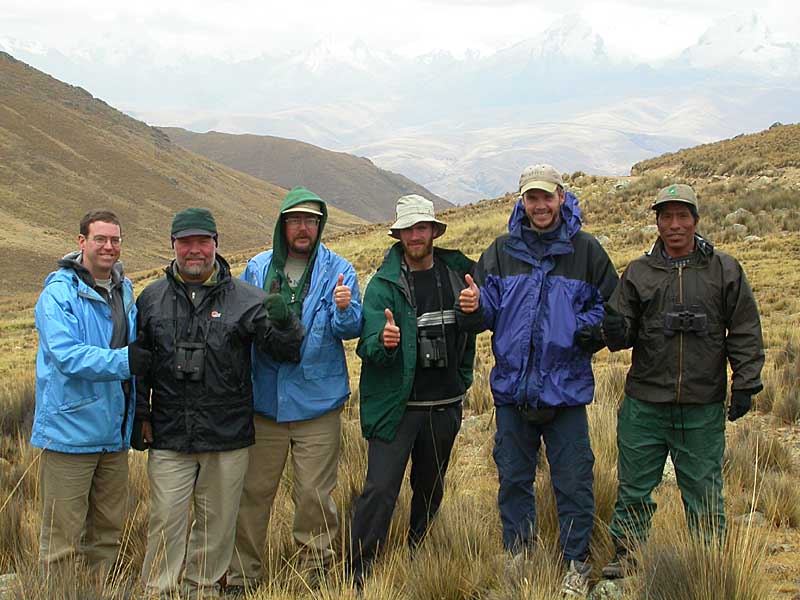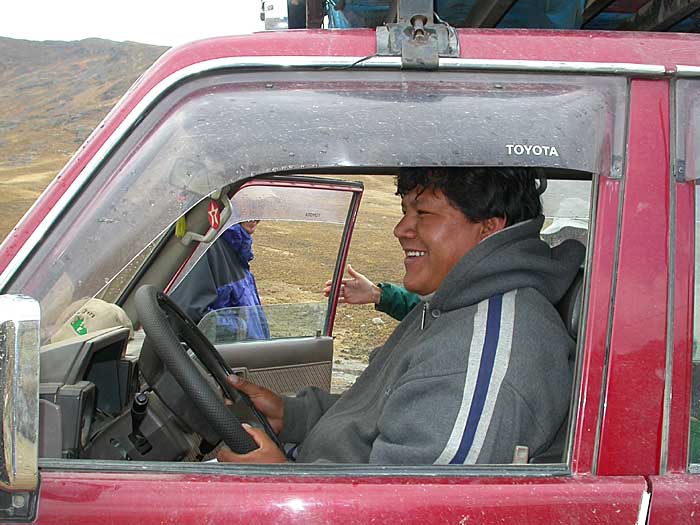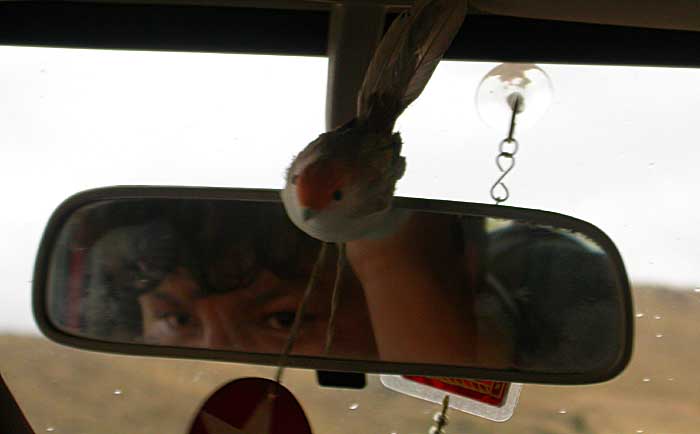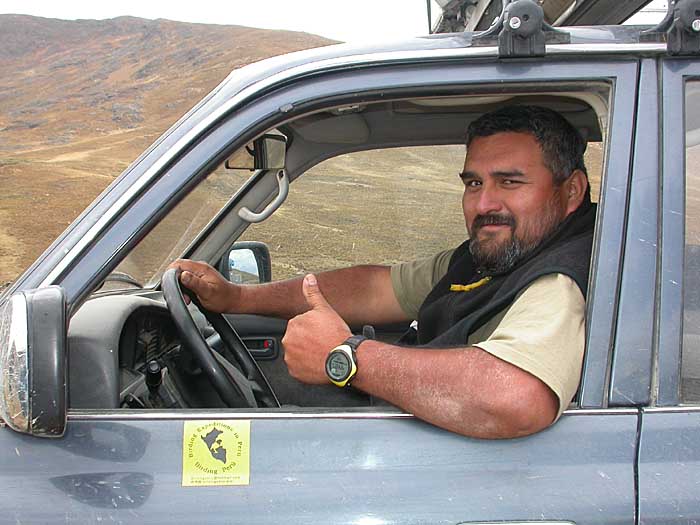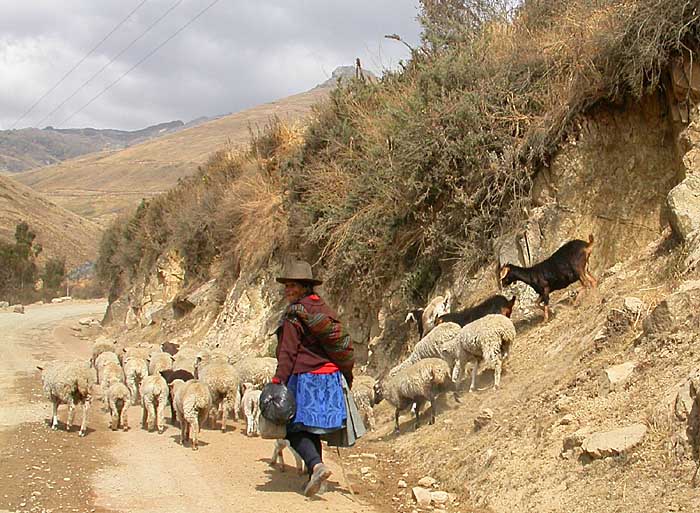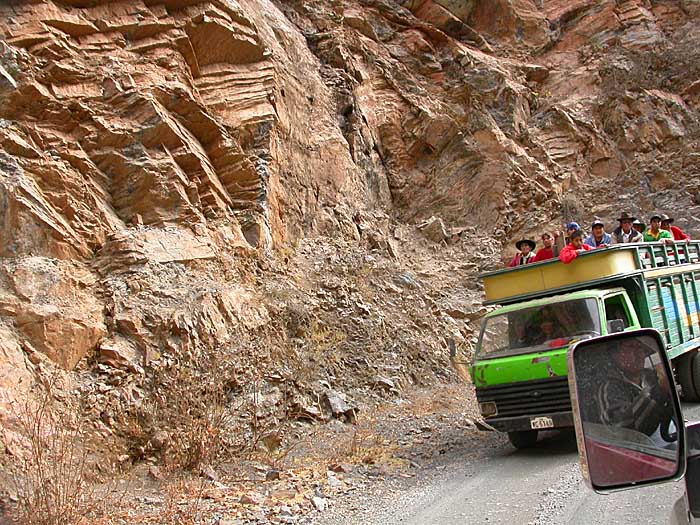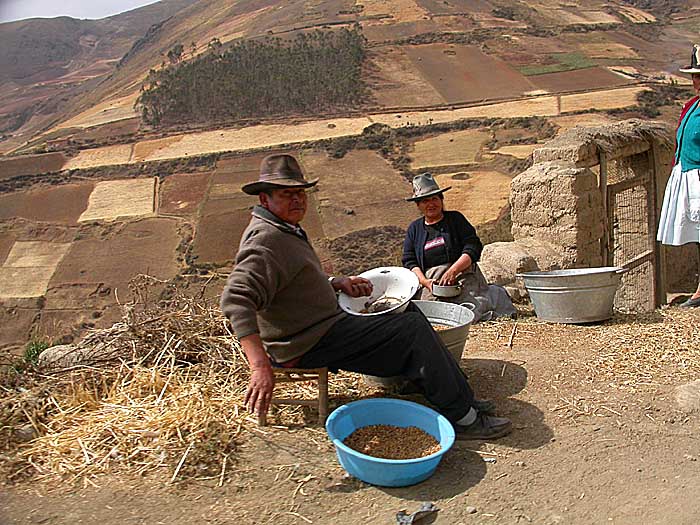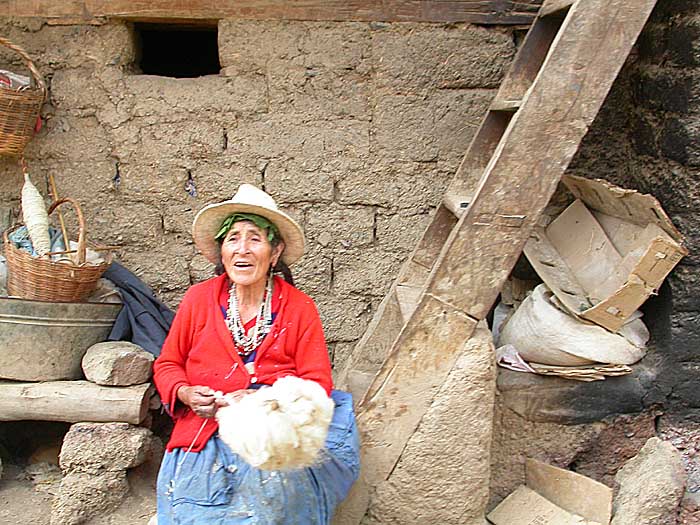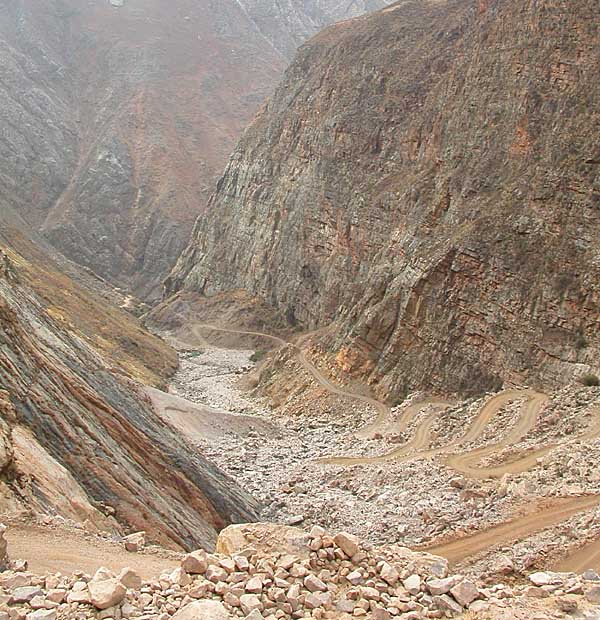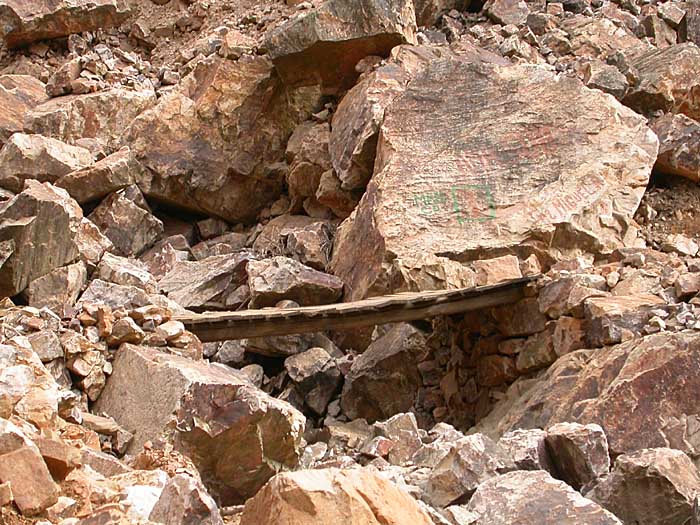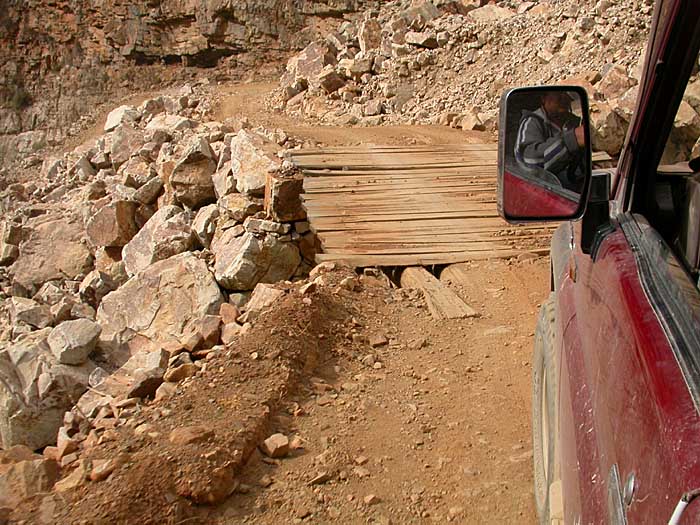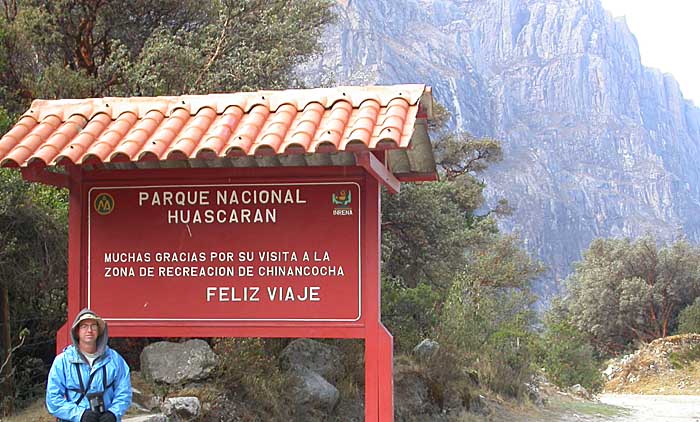
Huascarán National Park, ca. 3800m (ca. 12,500 feet)
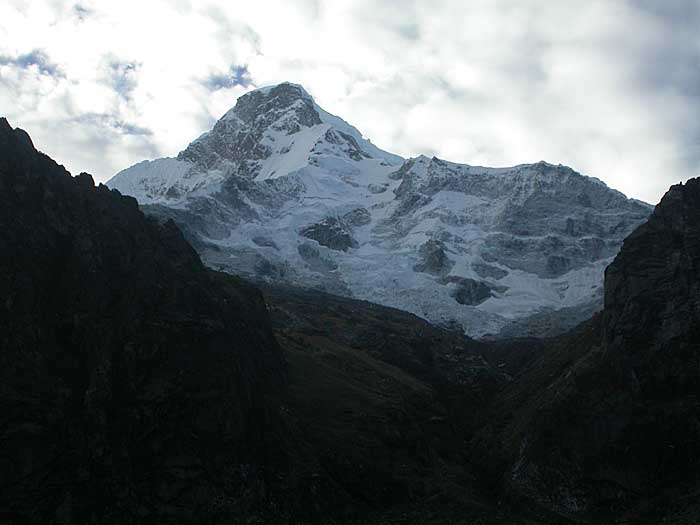
Mt. Huascarán, rising 6768m (22,205 feet), is Peru's tallest peak.
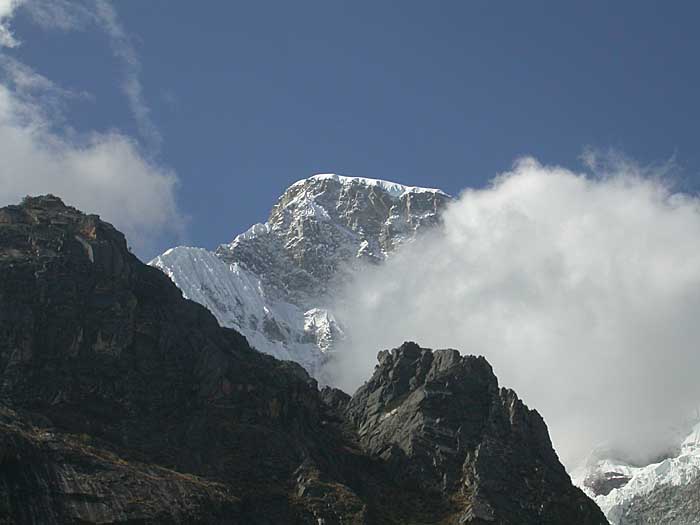
Mt. Huascarán
I couldn't resist taking several photos of this incredible mountain!
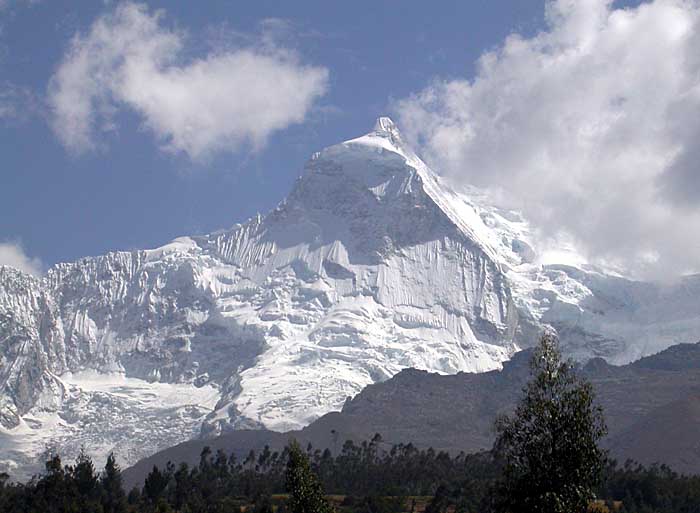
Mt. Huascarán
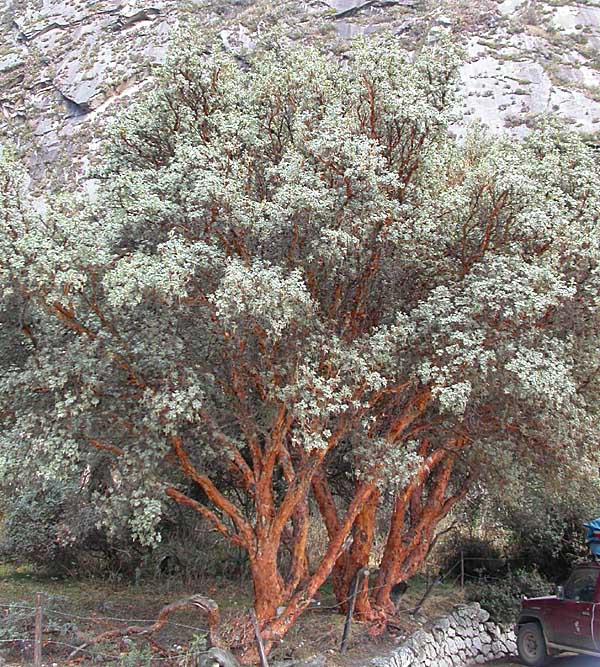
Polylepis is an unusual tree endemic to the high elevation Andes. This species can form large forests with several species of birds and other organisms that are specially adapted for this unique habitat.
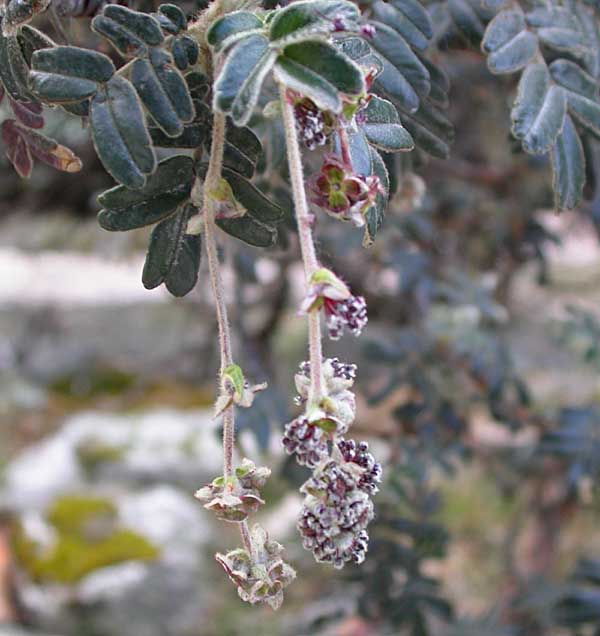
Close-up of Polylepis flowers. This tree is a member of the Rose family (Rosaceae) and naturally occurs at higher elevations than any other flowering tree in the world!
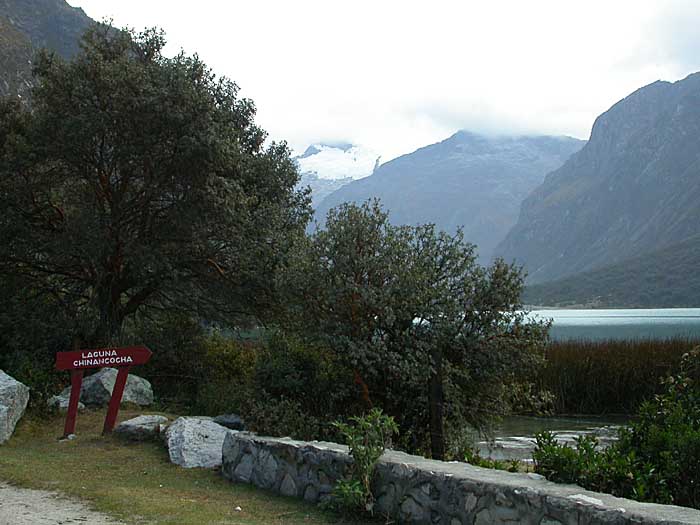
The first of a series of lakes in Huascarán N.P.
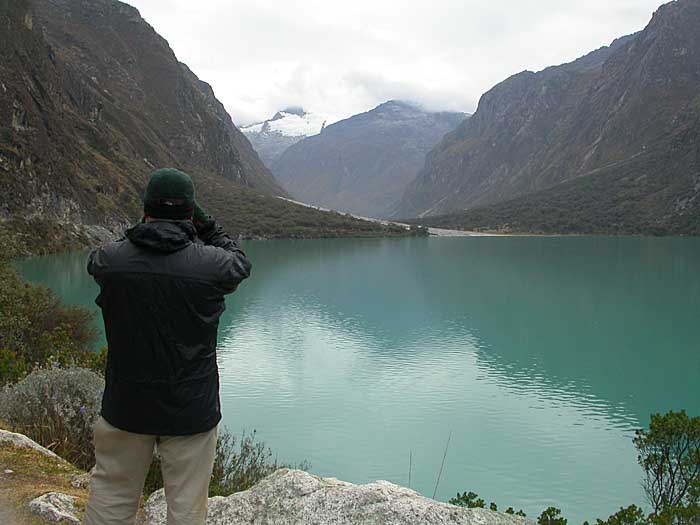
Derb scans Lake Chinancocha.
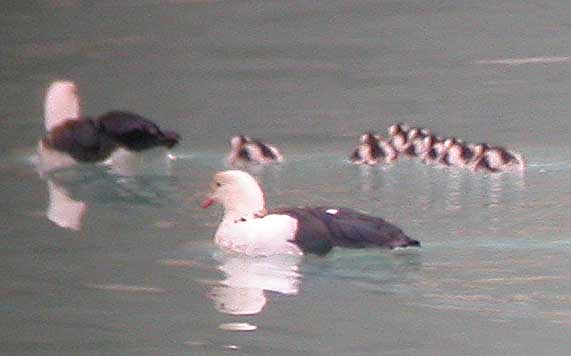
We drove up to the headwaters of this lake, where there was a marshy slough with lots of waterfowl. Check out more waterfowl shots on my Peru Birds photo page.
This photo of a family of Andean Geese was taken by Derb with my camera hand-held to the eyepiece of a KOWA spotting scope as we were practicing our digiscoping skills.
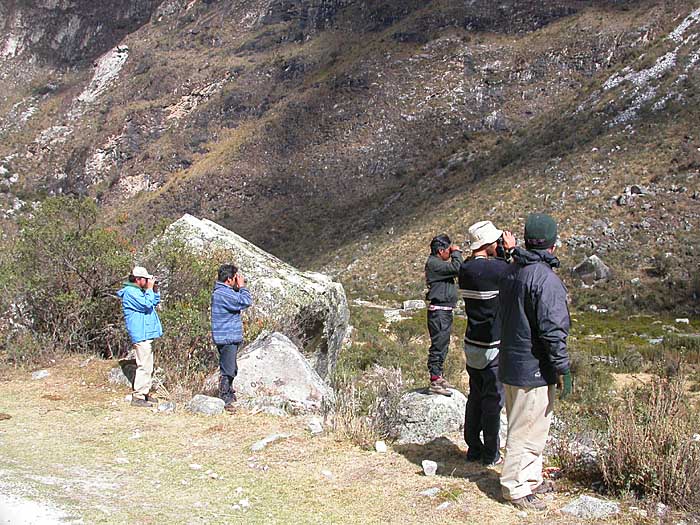
From left: Harry, Juan, Goyo, David, and Derb bird the river wetland.
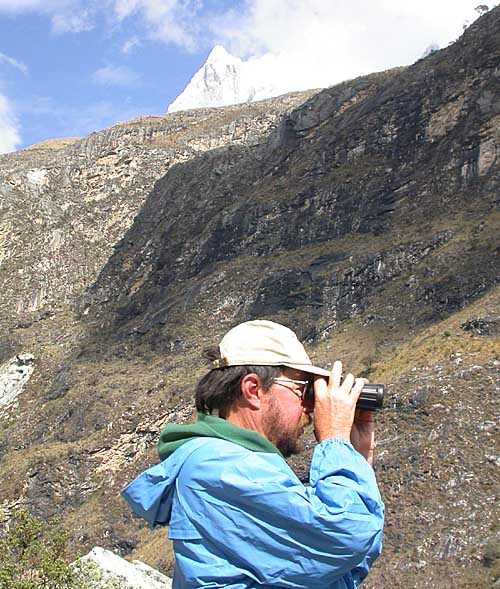
Harry scans for cinclodes & miners.
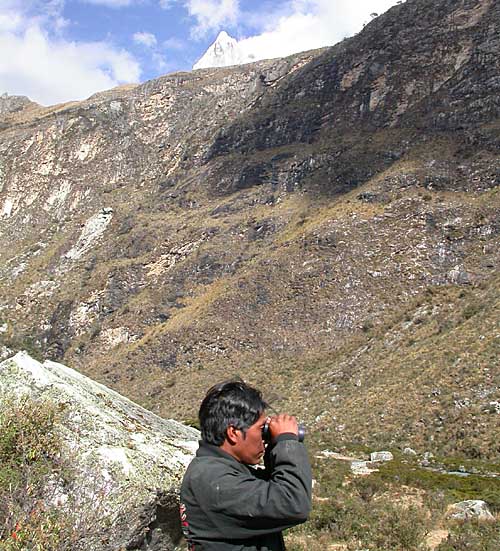
Goyo checks out the Torrent Duck
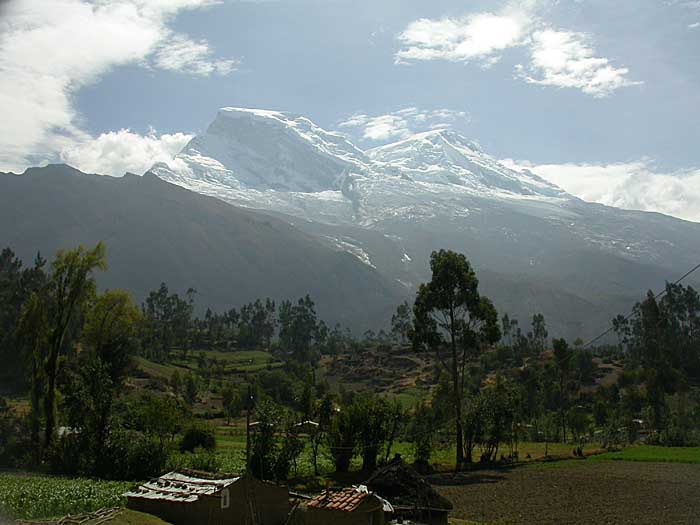
Here is the view from the road of Mt. Huascarán after we left the park and were on our way south.
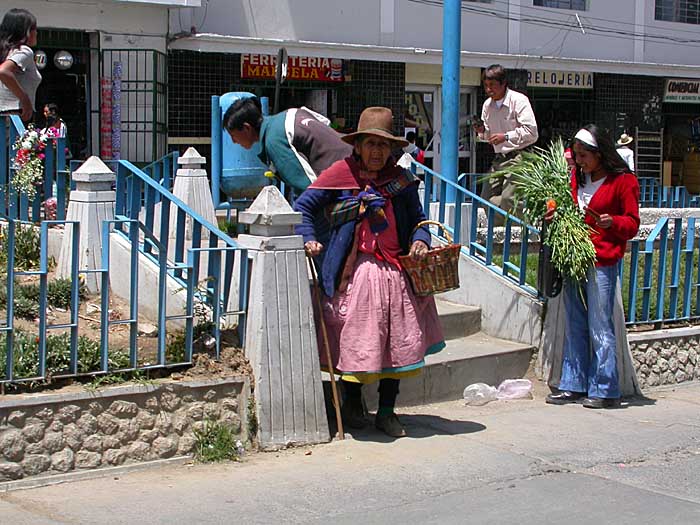
After leaving the national park, we drove through Huaraz, where I snapped a few shots of typical Peruvian street scenes.
Older women in the Andes usually wore hats with colorful outfits and often carried baskets or bundles of goods on their backs.
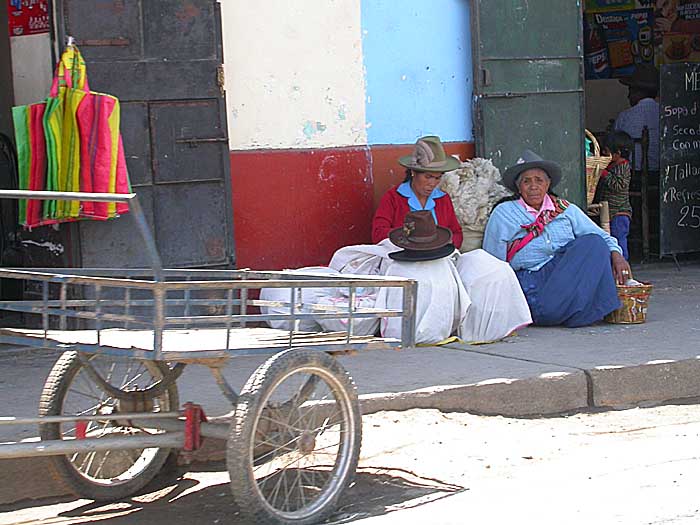
Here, some ladies are setting up a street shop. Note the pile of raw wool behind them, waiting to be spun into yarn.
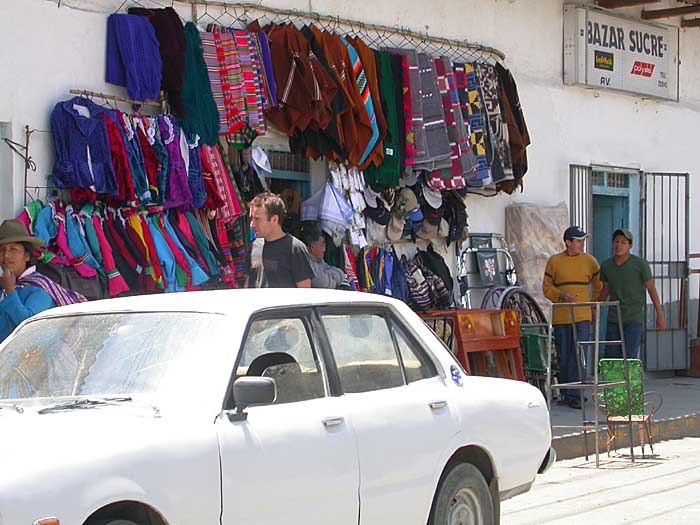
Street shops carried a bit of everything, from clothing and blankets to furniture. It was interesting to note that most of the younger people dressed just like us gringos.
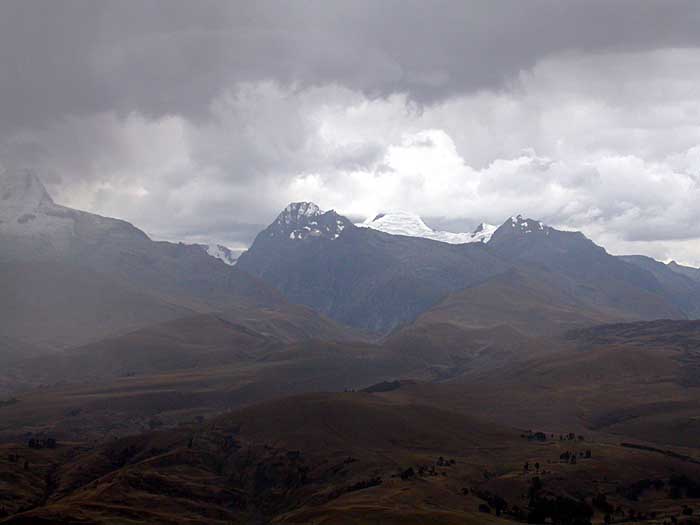
Departing Huaraz we once again were treated with spectacular views of the Cordillera Blanca range of the Andes as we worked our way up to 4000+ meters (13,100+ feet) to bird the puna/paramo habitats for a while.
